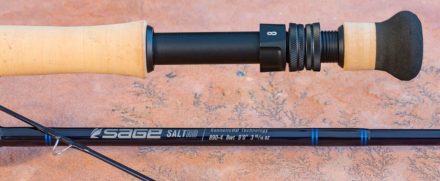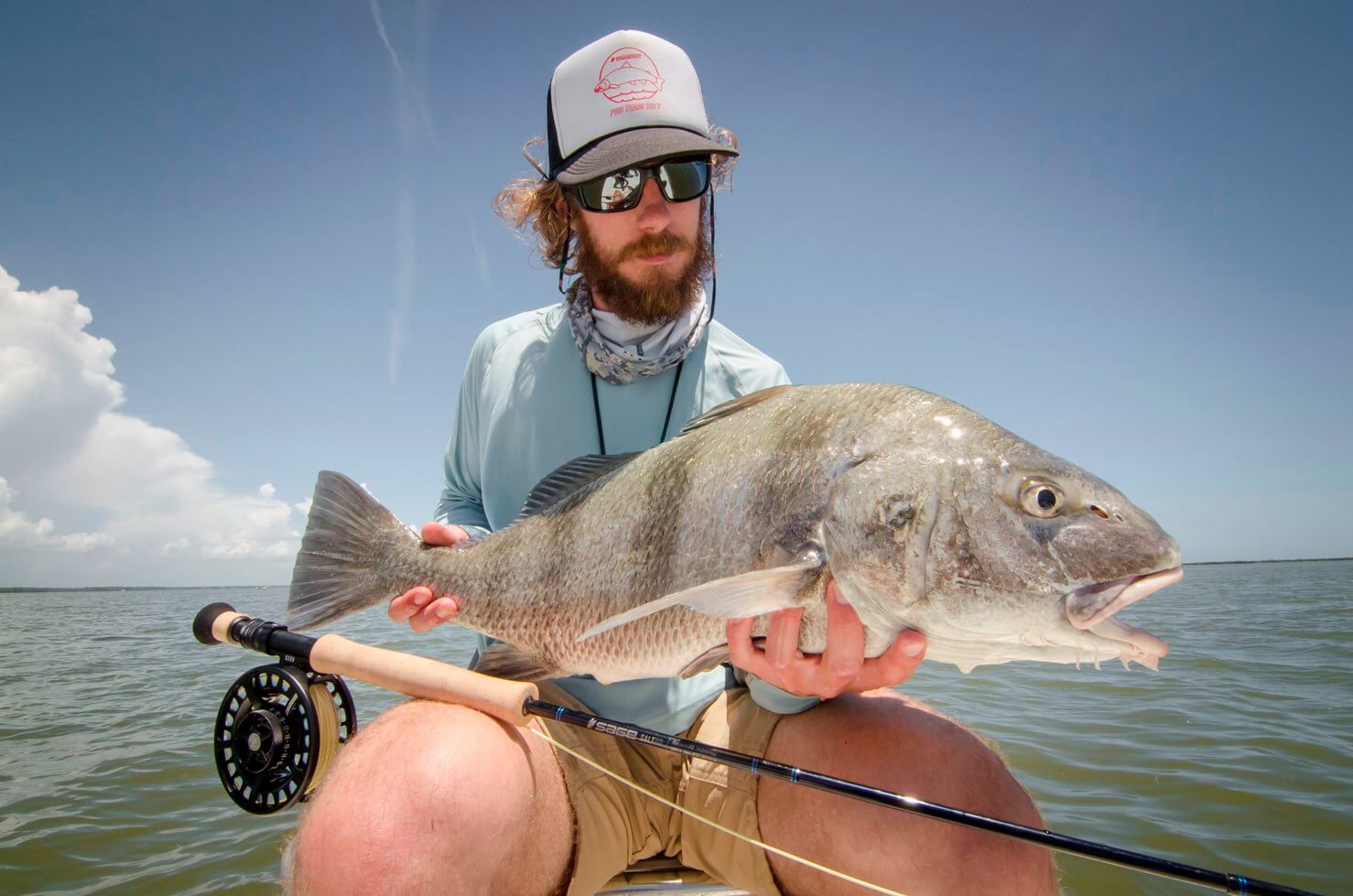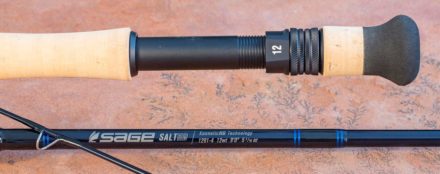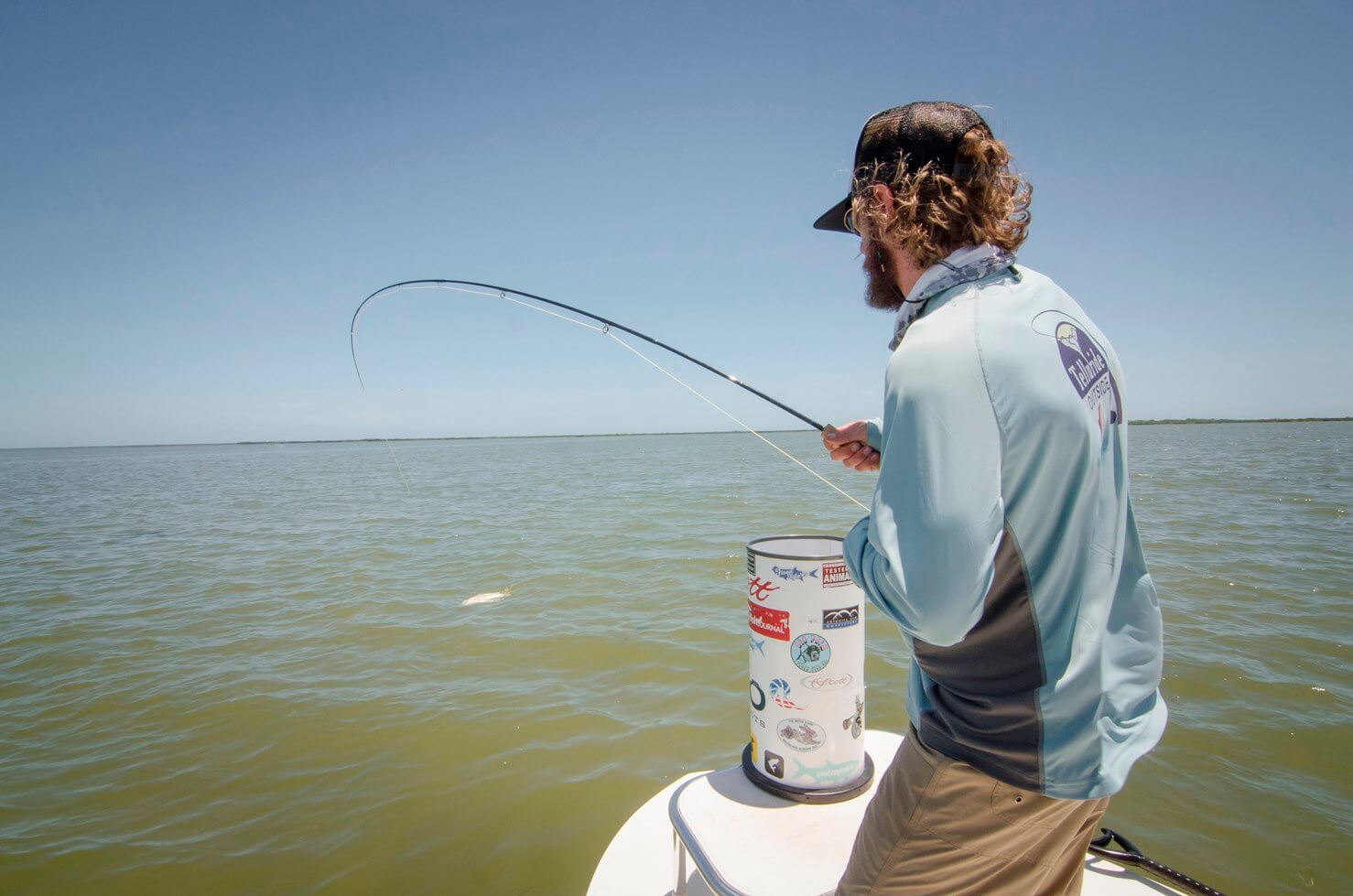 Casting notes from John Duncan and Richard Post on the complete Sage Salt HD fly rod lineup: Salt HD 690-4, Salt HD 790-4, Salt HD 890-4, Salt HD 990-4, Salt HD 1090-4, Salt HD 1190-4, Salt HD 1191-4, Salt HD 1290-4, Salt HD 1291-4, Salt HD 1386-4, Salt HD 1686-4
Casting notes from John Duncan and Richard Post on the complete Sage Salt HD fly rod lineup: Salt HD 690-4, Salt HD 790-4, Salt HD 890-4, Salt HD 990-4, Salt HD 1090-4, Salt HD 1190-4, Salt HD 1191-4, Salt HD 1290-4, Salt HD 1291-4, Salt HD 1386-4, Salt HD 1686-4
Sage Salt HD 690-4
Post: This rod was such a huge improvement over the Salt 690. The Salt 690 felt more like a stout trout rod than a light saltwater rod. The Salt HD 690 is a true saltwater 6 weight, made to generate line speed and drive a tight loop into the wind with a bonefish sized fly. The Rio Bonefish WF6F was a spot on match and the Salt HD 690 carried the line amazingly well through the air with superb loop control. The rod loaded and unloaded smoothly and confidently while transmitting a surprising level of feel back to the caster. I did not want to put the rod down. It was such a pleasurable rod to cast. This is the stick for advanced flats fisherman looking for a light touch with smaller flies in the #8-#4 range. When accuracy and delicacy are the most important factors on the flats reach for this rod. When the wind kicks up though don’t be afraid to stick with this rod. The action, the taper and the Konnetic HD material allow the caster to adjust their style to suit the conditions.
Duncan: By some measure, this is my favorite Sage Saltwater 6-weight that I have ever cast. The previous Salt 690-4 felt more like a trout rod to me, lacking the tip and mid-section stability to really drive the line in wind. The new model displays obvious merits of the HD technology. It’s really hard to throw a bad loop with this thing, but it doesn’t feel clunky or overbuilt in any respect. Both freshwater and saltwater anglers will enjoy the pure casting qualities and cagey fishing characteristics of this light line big fish fly rod.
Lines: Rio and SA Bonefish tapers, SA Amplitude Bonefish, SA MPX and Rio Gold for freshwater, Rio Outbound (both floating and sink tip) and SA Triple Density lines
Sage Salt HD 790-4
Post: This rod rocked my world! I absolutely love a 7 weight and the trend in the industry of making 7 weights that do the work of 8 weights from 10 years ago. The Konnetic HD material is second to none. I fell in love with the material with the X series and the X 790 has been my go to flats rod in 2017. I spent a week in Belize with the X 790 and was under the impression this was Sage’s best Saltwater 7, until I got my hands on the Salt HD 790. The Salt HD 790 feels more substantial in the hand and imparts confidence to the caster with added stability in the lower end of the rod. Loop shape was exceptional at all distances and flat out made me giddy while casting this rod. The tip felt slightly softer than the Salt, but the upper third of the rod was proportionately stiffer resulting in flat loops that traveled off the tip nice and level with a lot of line speed. The rod handled both long bonefish style heads and shorter heavier heads with ease. There are lots of rods out there that can handle different lines, but I believe the Salt HD and the X rods from Sage handle these different lines better than most. I didn’t have to change my casting stroke or cadence to accommodate the heavier lines. The rod seems to adjust between these lines automatically. For the fisherman, this aspect allows the angler to fine tune the rod according to the situation. Think about fishing a shorter, heavier headed line when you’re wading and taking shots inside of 40 feet quickly. Change the line when you’re on the bow of a skiff for longer shots and greater line pickup for quick second casts. I see the Salt HD 790 as a finely tuned flats tool that will allow most anglers to fish a lighter 7 weight line where they would usually reach for their 8 or 9 weight.
Duncan: One of my two favorite rods in the series, the 790-4 Salt HD is the next in a long line of fantastic 7-weights from Sage. The Sage 790-4 X is also an outstanding fly rod. The Salt HD feels like it was built for a more singular purpose (saltwater), whereas the lightness of the X makes it seem like a freshwater rod that would chip in for saltwater duty when called upon. The 790-4 Salt HD loads and casts short, as a 7-weight should, but also displays spectacular range. It casts beautiful loops with very different fly lines (I tried both a Rio Bonefish and Rio Flats Pro, which has a much heavier head). There was no distance at which the rod didn’t feel fantastic. This is a powerful fly rod, but very easy to cast. In the industry, a lot of people are saying that “a 7-weight is the new 8-weight.” This rod exemplifies that trend. It feels like a 7-weight, but the caster easily generates 8-weight casting power.
Lines: All of our favorites pair well with this rod. Choose a Rio Flats Pro for fast loading and maximum leader turnover. For more delicate presentations, Rio and SA Bonefish tapers offer better loop control and softer laydown. This rod will be popular for non-flats species, as well. Be confident that it will handle any 7-weight fly line, whether floating or sinking, freshwater or salt.
Sage Salt HD 890-4
Post: The Salt HD 890 is in my opinion the most improved rod in the lineup. I was never a huge fan of the Salt 890, and I was excited to see how the new HD would turn out in the 8 weight. I was even more excited when I found out I would have the chance to fish one while in Florida for IFTD. My On the Water review may be found on the Salt HD page of our website. Read the full review for all the details, but in general this rod was a smooth and confident caster that handled all the different lines I cast without a hitch. It is a confidence inspiring 8 weight that empowers the angler to achieve more: bigger fish, better casts into the wind, and longer, more accurate shots. This is Sage’s best saltwater 8 weight and a serious tool for the dedicated saltwater fly fisherman.
Duncan: This rod stumped me on the casting pond. I expected it to be the best in the series, but just couldn’t figure it out. The 890-4 Salt HD is perfectly capable of casting at any fishing distance, from 20-80 feet, but it doesn’t throw the gorgeous loops of the 6, 7 and 9-weights in this series. This is a practical saltwater 8-weight, but not a special fly rod. In comparison with other models, it feels a little clubby. The line doesn’t leap out of the guides. It just isn’t as finely tuned as the others. I tried it with both a Rio Bonefish line and the new Flats Pro. The Flats Pro generates more power, but feels awkward. The bonefish line was a substantial improvement, in my opinion. The Sage team recommends the Flats Pro line, which delivers a lot of punch. A bonefish tapers presents with greater control, however, and I personally recommend that line for better overall feel.
Sage Salt HD 990-4
 Post: This is one outstanding 9 weight! I was very impressed with how easily this rod cast and formed effortless, level loops at all distances. In a 9 weight, I want increased power into the wind and extra heft in the lower end for turning larger fish, but that same rod must lay the line down lightly. The Salt HD 990 delivered! Loop control and line speed were intuitive and automatic. The Salt HD 990 feels a shade lighter in the hand and two shades lighter through the casting stroke than its predecessor. I also felt like the Salt HD threw a tighter loop with more line speed than the Salt. The Salt HD 990 is my top choice for a permit rod from Sage. This rod strikes a balance between the uncompromising line speed of the Method and the casting ease of the Salt 990. Long, delicate presentations and quick one-shot casts into a stiff breeze with a crab pattern are situations where this rod will shine. If you are a permit angler who’s fishing an older Sage 10 weight, consider upgrading your gear and dropping a line weight to the Salt HD 990. We cast the Rio Permit and the new Rio Flats Pro. Both lines cast wonderfully on the rod and like the rest of the Salt HD lineup, the 990 handled the different head weights and shapes without missing a beat.
Post: This is one outstanding 9 weight! I was very impressed with how easily this rod cast and formed effortless, level loops at all distances. In a 9 weight, I want increased power into the wind and extra heft in the lower end for turning larger fish, but that same rod must lay the line down lightly. The Salt HD 990 delivered! Loop control and line speed were intuitive and automatic. The Salt HD 990 feels a shade lighter in the hand and two shades lighter through the casting stroke than its predecessor. I also felt like the Salt HD threw a tighter loop with more line speed than the Salt. The Salt HD 990 is my top choice for a permit rod from Sage. This rod strikes a balance between the uncompromising line speed of the Method and the casting ease of the Salt 990. Long, delicate presentations and quick one-shot casts into a stiff breeze with a crab pattern are situations where this rod will shine. If you are a permit angler who’s fishing an older Sage 10 weight, consider upgrading your gear and dropping a line weight to the Salt HD 990. We cast the Rio Permit and the new Rio Flats Pro. Both lines cast wonderfully on the rod and like the rest of the Salt HD lineup, the 990 handled the different head weights and shapes without missing a beat.
Duncan: Side-by-side with the 7-weight, this is my favorite rod in the series. There are lighter 9-weights on the market, but possibly none that match the overall power and ability to throw a wicked wedge of the 990-4 Salt HD. This rod loves an aggressive headed fly line and responds well to power, but is much easier to cast than most previous Sage saltwater fly rods. As a trout angler for whom saltwater rods normally require an adjustment period, the rod fell into my hands naturally and seemed to cast itself. Experienced Sage rod anglers who love the raw power of the Method and Xi3 will be blown away by how easily this rod exceeds the horsepower of any predecessor.
Line pairing: The Salt HD 990-4 will respond to anything you ask, but casts best with a Rio Flats Pro, SA Grand Slam or other aggressively tapered saltwater line. I don’t recommend the Rio Bonefish Quickshooter, but only because I don’t care for the line’s presentation qualities. The rod will throw it all day. Rio and SA Bonefish tapers cast better than a Rio Permit line on this rod because you get to the back taper more quickly and take advantage of this rod’s spectacular shooting ability.
Sage Salt HD 1090-4
 Post: I was excited to get a hold of this rod, but also a little nervous, since I have a Salt 1090 in the rod closet right now. The Salt HD 1090 turned out to be a very different rod than the Salt 1090. The most noticeable change is how much easier the Salt HD was to cast compared to its predecessor. I have fished a lot of different lines on my Salt 1090, and never found a 10 wt line that I really liked on the rod. For example, the Rio Permit WF10F was not a great match for the Salt 1090. However, the Salt HD 1090 threw the Permit WF10F line exceptionally well and very easily. Overall, the HD was a muh friendlier rod to cast than the Salt. The enormous strength in the lower end of the rod is still there, but a caster can access the middle of the Salt HD 1090 through the cast without gritting his teeth too much. Unlike the Salt 1090, the Salt HD 1090 is a viable heavy permit stick. Distance, accuracy and loop control were all there with the long-headed salt water line. I always felt like the Salt 1090 was more of a Tarpon or GT class 10 weight meant for pulling on fish more than casting. Sage did a great job of making the Salt HD 1090 an easier rod to cast without losing its uncompromising strength and lifting power in the lower end. Choose this rod if you’re the guy who wants one rod that can fish laid up tarpon and bigger permit. This is a perfect big rod for Belize and the Yucatan.
Post: I was excited to get a hold of this rod, but also a little nervous, since I have a Salt 1090 in the rod closet right now. The Salt HD 1090 turned out to be a very different rod than the Salt 1090. The most noticeable change is how much easier the Salt HD was to cast compared to its predecessor. I have fished a lot of different lines on my Salt 1090, and never found a 10 wt line that I really liked on the rod. For example, the Rio Permit WF10F was not a great match for the Salt 1090. However, the Salt HD 1090 threw the Permit WF10F line exceptionally well and very easily. Overall, the HD was a muh friendlier rod to cast than the Salt. The enormous strength in the lower end of the rod is still there, but a caster can access the middle of the Salt HD 1090 through the cast without gritting his teeth too much. Unlike the Salt 1090, the Salt HD 1090 is a viable heavy permit stick. Distance, accuracy and loop control were all there with the long-headed salt water line. I always felt like the Salt 1090 was more of a Tarpon or GT class 10 weight meant for pulling on fish more than casting. Sage did a great job of making the Salt HD 1090 an easier rod to cast without losing its uncompromising strength and lifting power in the lower end. Choose this rod if you’re the guy who wants one rod that can fish laid up tarpon and bigger permit. This is a perfect big rod for Belize and the Yucatan.
Duncan: This is the most improved rod in the series. The former Salt 1090-4 had enormous power, but required substantial power input from the caster. Otherwise, it wouldn’t flex enough for guys like me to cast it comfortably. The 1090-4 Salt HD has equal or greater power, but is so much more user friendly. Like the 990-4 Salt HD, I recommend a Rio Flats Pro or SA Grand Slam taper with the 1090-4.
Sage Salt HD 1190-4
Post: I always want to leave the show and feel like I nailed it with every rod. I like to come away with more answers than questions. I cannot confidently say that with the Salt HD 1190. We cast the rod with the Rio Tarpon line and I just couldn’t make the pair dance in tune. I’ve come to the conclusion that the Rio Tarpon line is not the line for me or the Salt HD 1190. The Rio Technical Tarpon line or the Scientific Anglers Sonar Saltwater WF11I would be a better line pairing in my opinion.
Duncan: I prefer the 1191-4, which has an extended foregrip. Not always a fan of fighting grips, in this case the 1191-4 seems to possess greater stability in the lower mid-section when casting. The Sage guys disagree with me on this point, but with heavy-headed tarpon lines, the 1190-4 seems to wander off axis with an inaccurate result. Both the 1190-4 and 1191-4 load easier than their predecessors in the Salt Series. I suspect that all anglers will find these rods to be more approachable and fundamentally easier to cast.
If you choose the 1190-4, go with a Rio Tarpon Technical line to enhance your loop control.
Sage Salt HD 1191-4
Post: I much preferred the Salt HD 1191 to the 1190. I’m generally not fan of extended fighting grips while casting, although I think they look mean as hell on the rod. The 1191 was more stable and controlled the Rio Tarpon line much better than the 1190. Even though I didn’t necessarily like the line, that line made my preference for the extended fighting grip clear on the 11 and 12. My favorite 11 weight from Sage is still the X rod. Choose the Salt HD 1191 for added durability and shear strength when yarding on large fish. This rod would make an excellent rod for chasing GTs on foot in the Pacific. For GT go with the lighter 400Grain line. For Tarpon I’d select the Rio Technical Tarpon WF11F, the SA Tarpon WF11F or the SA Sonar Saltwater Intermediate WF11I.
Duncan: I prefer the 1191-4, which has an extended foregrip, over the 1190-4 in this series. In this case, the 1191-4 seems to possess greater stability in the lower mid-section when casting. The Sage guys disagree with me on this point, but with heavy-headed tarpon lines, the 1190-4 seems to wander off axis with an inaccurate result. Both the 1190-4 and 1191-4 load easier than their predecessors in the Salt Series. I suspect that all anglers will find these rods to be more approachable and fundamentally easier to cast.
The 1191-4 will handle normal tarpon tapers (Rio Tarpon and SA Tarpon), plus a full complement of sinking saltwater.
 Sage Salt HD 1290-4
Sage Salt HD 1290-4
Post: Like the 11 weight I preferred the 1291 to the 1290. Something about the extended grip on the Salt HD rods added some more stability and confidence with line in the air. This rod has insane strength in the butt section of the rod and really feels like a fish whipping tool in your hand.
Duncan: Just like the 11-weights, I strongly prefer the 1291-4 version of this fly rod. It feels unstable and inaccurate, but I will certainly concede that it is easier to cast than the former Salt 1290-4.
Lines: if you choose the 1290-4 over the 1291-4, consider a Rio Tarpon Technical line for greater control.
Sage Salt HD 1291-4
Post: Better than the 1290 in my opinion and the extended grip looks like it means business. The Salt HD 1291 cast and carried line in the air very well. This will be Sage’s flagship 12 weight, capable of putting a hurting on big tarpon, GTs, wahoo, and a lot of fish you probably should never cast a fly to. I still put this rod in the category of fish fighting tool rather than a casters rod, but that tends to be the nature of the 12 weight. If you’re looking for a big tarpon or GT rod, the Salt HD 1291 should be at the top of your list. For lines I recommend the Rio GT 475grain, the Rio Direct Core Flats Pro WF12F, and the Rio Tarpon Quickshooter WF12F.
Duncan: This is one of the few cases in which I prefer the extended foregrip version of a tarpon rod over the model with the conventional Wells grip. There is a noticeable difference in action – the extended foregrip model (1291-4 Salt HD) is more stable and accurate. It just casts better than the 1290-4. This rod will handle any tarpon-style line, whether floating or sinking.
Sage Salt HD 1386-4
Post: This is a rod that I will probably never fish, and maybe never have an occasion to fish, but it sure is cool. Truly large fly rods intrigue me, and they impress me with what they are designed to do. Sage built this rod as a billfish and bluewater weapon. While it is certainly up to snuff as far as lifting power is concerned, the 8 foot 6 inch length allows this rod to actually cast a fly. This is no 5 weight, but it is a rod that most casters can pick up and throw a popper at an ill-intentioned bill thrashing the surface where a teaser once was. Maybe one day.
Duncan: Although I may never use a 13-weight fly rod, I found this rod to be surprisingly castable. If you need it, don’t fear it.
Sage Salt HD 1686-4
Post: Like the Salt HD 1386, the 1686 casts like a fly rod. This thing is a stick though and if I had to rob a bank with a fly rod, I’d probably pick this thing up. Like all the Salt HD rods, the 1686 is meticulously and purposefully built for spending a life at sea. This is another rod that I probably won’t ever have a chance to fish, but I sure would like to, or at the least have a beer with the guy that gets to fish this thing. Sharks, marlin, tuna and other fish that are generally exceptions to a fly rod’s ability should be the target of this immensely powerful fly rod.
Duncan: Like the 13-weight, I am impressed at how useable this 16-weight feels. I tried it with a typical offshore shooting head and found that it casts surprisingly like a fly rod…
